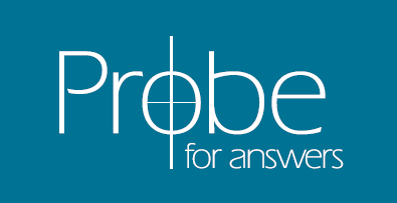Kerby Anderson provides an overview of four world-changing cycles: a political/cultural cycle, a generational cycle, a technological cycle, and a financial cycle.
Are there cycles in history? Yes, even though there is a linear trajectory in history, there are generational cycles we can observe. No doubt you have heard the phrase: “Hard times create strong men, strong men create good times, good times create weak men, weak men create hard times.” Or you may have heard: “History doesn’t repeat itself, but it often rhymes.” And you may have heard the phrase “the fourth turning” that predicts a crisis at the end of a four-fold cycle.

We are going to look at four of the most often quoted cycles: a political/cultural cycle, a generational cycle, a technological cycle, and a financial cycle. Today we take for granted democracy, capitalism, and the industrial revolution. These political, economic, and technological realities were not always in our world but came about because of revolutions.
One of the most significant revolutions took place 250 years ago. Andrew Wilson talks about this in his book, Remaking the World. He describes 1776 as “a year that witnessed seven transformations taking place—globalization, the Enlightenment, the Industrial Revolution, the Great Enrichment, the American Revolution, the rise of post-Christianity, and the dawn of Romanticism.”
Some of the events in 1776 we know. That was the year the Declaration of Independence was ratified. It was the year when Adam Smith published the Wealth of Nations in 1776. It was also the year of James Watt’s invention of the steam engine that spawned the industrial revolution. Both capitalism and the industrial revolution led to a significant increase in life expectancy and the rise of social development.
In this article as we discuss each of these four cycles, we should remember this interesting fact: all these cycles seem to be converging today. The last time these cycles converged in 1776, the world changed.
We are fortunate to live in such a time as this (Esther 4:14). We should be like the sons of Issachar (1 Chronicles 12:32) who were “men who understood the times, with knowledge of what Israel should do.”
What does the future hold? Only God knows. As the song goes, “He’s got the whole world in His hands.” We may not know the future, but we can trust in the One who knows the future.
I think we are likely headed for a massive change in the future. But it is difficult to predict what political event or economic spark might inflame our world. Therefore, we should all be in prayer for our leaders and prepare ourselves for possible turmoil ahead.
Political/Cultural Cycle
Let us look at what appears to be an eighty-year political/cultural cycle. (It actually seems to average out to about 84 years). Go back to 1848 and you have Karl Marx publishing the Communist Manifesto and other works. The political and social impact of his Marxist perspective swept through Europe, changed the political structure of many countries, and is still an influence today. This idea not only introduced a new way of viewing the world but was also responsible for removing the monarchy from most nation states.
Another important political change happened 84 years later in the 1930s. In Europe, you have the rise of Adolf Hitler and Benito Mussolini. In this country, you had the election of Franklin D. Roosevelt who signed into law a significant number of New Deal programs that vastly expanded the scope of government and are influential in our lives today. It is worth remembering that the federal government wasn’t as large as it is today. Roosevelt was responsible for the creation of so many of the alphabet soup of programs and federal agencies. The following decades were the era of big government.
If you add another 84 years, you come to 2016. In Europe, you have the political battle known as Brexit and the beginning of some populist uprisings. In this country, you also had the rise of populism and a reaction to the size and scope of big government. That was best illustrated by the election of Donald Trump.
It was also a time of turmoil. In Europe, we had the farmer protests in the Netherlands and the yellow jacket protests in France. In the U.S., we had BLM protests and Antifa protests.
There is also a longer cycle that describes the rise and fall of empires. General John Glubb notices that most empires last about 250 years. If you apply that to the U.S., you find that we are entering the end of that cycle. One key date is 1776. That not only marks the beginning of the nation (Declaration of Independence) but the promotion of capitalism (Adam Smith and the publication of The Wealth of Nations). By the way, if you go back about 250 years before that you come to the Protestant Reformation that began when Martin Luther nailed the 95 theses to the Wittenberg Door.
We are fortunate to live in such a time as this (Esther 4:14). We should be like the sons of Issachar (1 Chronicles 12:32) who were “men who understood the times, with knowledge of what Israel should do.”
What does the future hold? It appears we are likely headed for a massive change in the future.
Generational Cycle
We now turn to looking at a generational cycle.
More than a quarter century ago, William Strauss and Neil Howe wrote their bestselling book, The Fourth Turning: An American Prophecy. In it, they argued that history could be understood as coming in turnings, which have cycles of four. Each cycle spans a length longer than human life, roughly 80 to 100 years. That unit of time was what the ancients called the saeculum. These four turnings of the saeculum comprise the historical rhythm of growth, maturation, entropy, and destruction.
The first turning is a High – an upbeat era of strengthening institutions and weakening individualism. That is when a new civic order develops and the old values decay. The second turning is an Awakening – which is a passionate era of spiritual upheaval. This is when the civic order comes under attack from new values. The third turning is an Unraveling – which is a downcast era of strengthening individualism and weakening institutions. This is when the old civil order decays and new values develop. The fourth turning is a Crisis – which is a decisive era of secular upheaval. The values regime propels the replacement of the old civil order with a new one.
The authors predicted that political, economic, and social upheavals would rattle the United States in and around the 2020s. The 2008 economic crisis and the changes just described from 2016 seemed to support the predictions made in the book.
Last year, Neil Howe wrote The Fourth Turning Is Here. The title tells it all. We are in crisis as illustrated by a government that does not seem to function, low public trust in just about any institution, political polarization, moral and legal chaos, and a collapse of families. He reminds us of the Abraham Lincoln quote that “a house divided against itself cannot stand” and that the government “will become all one thing, or all the other.” He also reminds us of other fourth turning crises in America: World War II, the Civil War, and the American Revolution.
We are fortunate to live in such a time as this (Esther 4:14). We should be like the sons of Issachar (1 Chronicles 12:32) who were “men who understood the times, with knowledge of what Israel should do.”
What does the future hold? It appears we are likely headed for a massive change in the future.
Technological Cycle
Let’s look at a technological cycle.
There appears to be about a fifty-year technological cycle, in which we see important technological revolutions. In the late 18th century, we saw the beginnings of what today we refer to as the industrial revolution. Most people lived on farms. This revolution brought people out of the farms into the cities and factories.
Fifty years later was the age of steam and railways that changed the world significantly. Up until that time, we had manpower and horsepower. Trains that run on steam and steam ships changed the world in significant ways. Now people could move faster and carry heavier loads over a longer distance.
Fifty years after that we had steel and electricity. Steel was important in buildings. Brick buildings could only be a few stories high. Steel allowed designers to create skyscrapers and to build bridges over larger sections of water. Electricity literally lit up the dark night and provided numerous conveniences that we take for granted today.
Fifty years after that we had oil, automobiles, and a revolution in mass production. Automobiles provided people with the ability to go wherever they wanted without having to walk, ride a horse, or catch a train. Advances in mass production enhanced the industrial revolution and made possible the vast array of products available to us today.
By the 1970s, we came into the age of information and telecommunications. This came about with the development of the transistor and then the microchip. Our digital world developed because of these inventions.
Today, we find ourselves in a world of fast computers, artificial intelligence, and genetic engineering. We have social media, but we also have social media censorship. We have creative graphics, but we also have deep fakes and growing questions about what is real and what is fake. We can genetically treat and cure diseases, but we can also genetically engineer humans. How much of this will be driven by politics or economics? It is worth noting this latest technological cycle raises significant questions and also coincides with the political cycles and the generational cycle.
We are fortunate to live in such a time as this (Esther 4:14). We should be like the sons of Issachar (1 Chronicles 12:32) who were “men who understood the times, with knowledge of what Israel should do.”
What does the future hold? It appears we are likely headed for a massive change in the future.
Financial Cycle
In this article we have looked at four important historical cycles. Now we conclude by covering a financial cycle. You will notice that some of the financial cycles parallel the technological revolutions.
America moved from an agricultural society to an industrial economy to an information society.
If you look at the wealth cycles of nations, you notice something interesting about which currency was dominant. The financial superpower changes over time, on average about 100 years. Perhaps you have seen a chart that shows these changes:
Portugal – Portuguese Real (15th century)
Spain – Spanish Real (16th century)
Netherlands – Dutch Guilder (17th century)
France – Franc (18th century)
Britain – Pound sterling (19th century)
U.S. – U.S. dollar (20th century)
Where are we today? The U.S. and other countries around the world are experiencing a debt crisis. One significant reason for this is the fact that the dollar is no longer “good as gold.” For 5,000 years, money was gold. But protecting it and transporting it was difficult. Banks and nations held the gold and created paper certificates that represented the value. Sometimes, the amount of paper currency was not always backed by gold.
The greatest problem came in the 20th century. In 1944, the Bretton Woods conference fixed gold at $35 per ounce. But by 1971, President Nixon closed the gold window and we have seen over the last fifty-plus years that the value of the dollar has continually declined. Also, the possibility of the U.S. dollar remaining the reserve currency in the world is questionable.
At the same time, this country and other countries are facing a significant debt crisis. It is easy to spend more when all you need to do is print more money. That leads to inflation and a devaluation of your currency.
When faced with a debt crisis, you only have a few options. You can default on the debt, which some nations have done. You can tax the citizens, but there isn’t enough wealth in any nation to cover the size of those national debts. You could cut spending, but few politicians would ever consider that option. Instead, most countries (including the U.S.) print more money. Unfortunately, that can only last for so long. Just look at Weimar Germany or Zimbabwe or Venezuela.
We are fortunate to live in such a time as this (Esther 4:14). We should be like the sons of Issachar (1 Chronicles 12:32) who were “men who understood the times, with knowledge of what Israel should do.”
What does the future hold? It appears we are likely headed for a massive change in the future.
©2025 Probe Ministries










